Pelicans
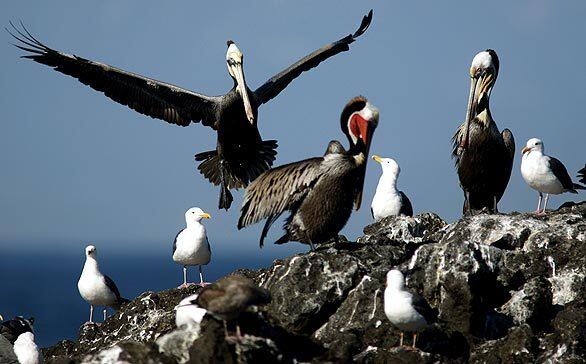
A pelican lands at a nesting site on West Anacapa Island. Forty years ago, the birds were devastated by DDT and in 1970 declared an endangered species. Their numbers have soared since the pesticide was banned in 1972 and the U.S. Department of the Interior wants to remove them from the list of endangered species. (Francine Orr / Los Angeles Times)
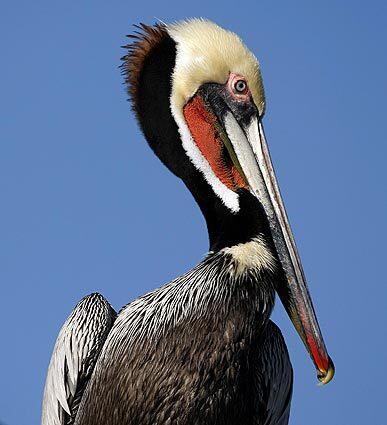
A California brown pelican rests atop the Balboa Pavilion overlooking Newport Harbor in Newport Beach. Officials estimate there are more than 11,000 nesting pairs from Point Conception to just south of Ensenada. (Allen J. Schaben / Los Angeles Times)
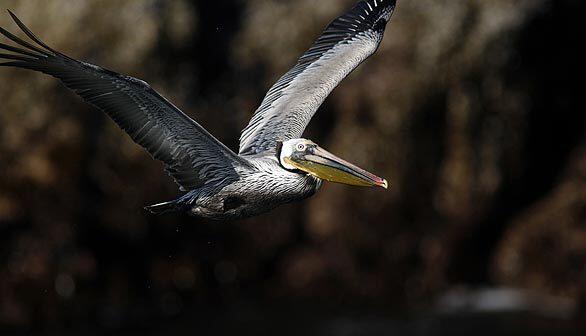
A pelican flies near East Anacapa Island. They are gregarious and social, and on land seem clumsy, with their heavy wings that span seven feet. But they are strong swimmers and when they take to the air, often with a running start, they form a graceful, silvery-brown squadron gliding effortlessly across the sky. (Francine Orr / Los Angeles Times)
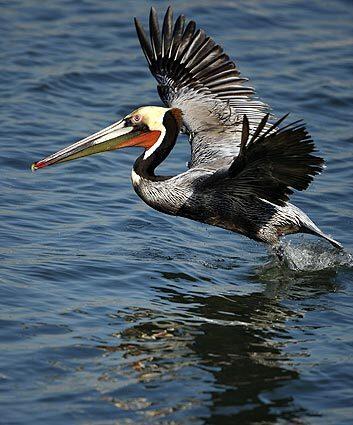
A California brown pelican takes flight over Newport Harbor. The pelican is one of the best indicators of environmental health, says UC Davis ecotoxicologist Daniel Anderson, who has studied California pelicans since 1971. When you see a flock of pelicans fly by, you think alls well out there. When you dont see them, then you know somethings wrong. (Allen J. Schaben / Los Angeles Times)
Advertisement
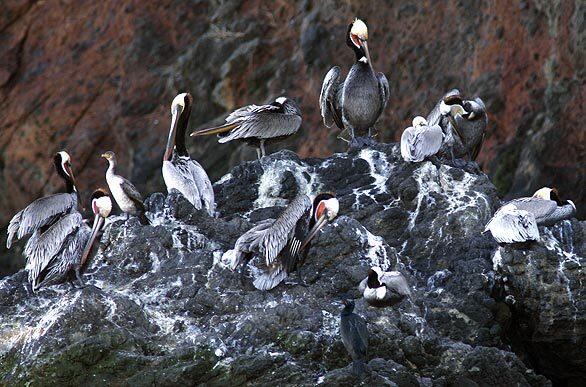
Pelicans on West Anacapa Island. Even without the Endangered Species Act, pelicans enjoy wide protection. The Channel Islands, a primary nesting ground, are a national park, and Mexico has created reserves along the Gulf of California, where the vast majority breed. (Francine Orr / Los Angeles Times)

California brown pelicans soar gracefully over a breaking wave as a surfer watches near the Huntington Beach Pier. (Allen J. Schaben / Los Angeles Times)







